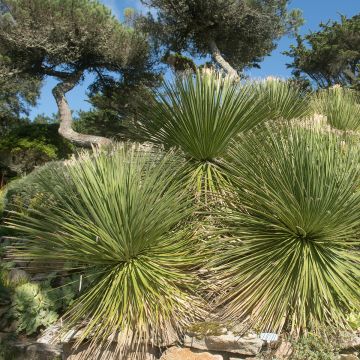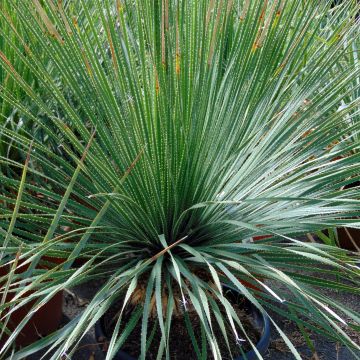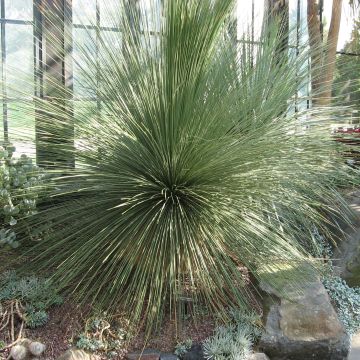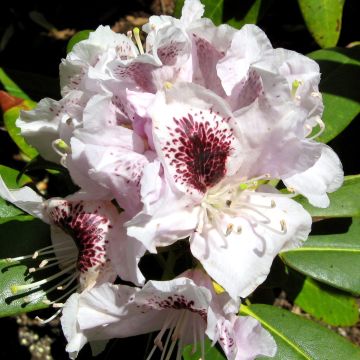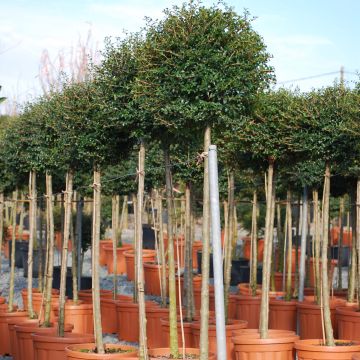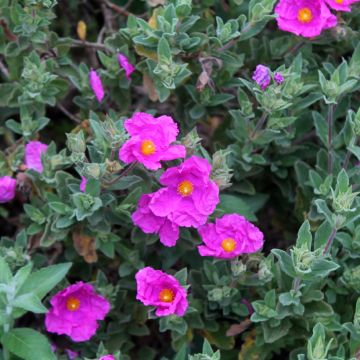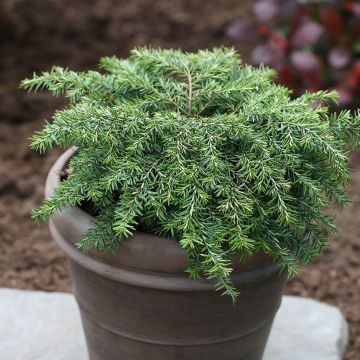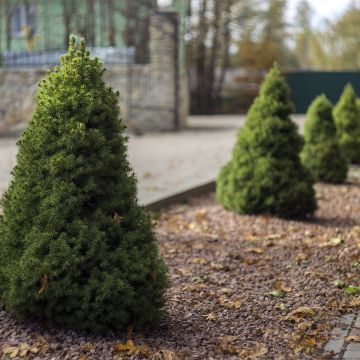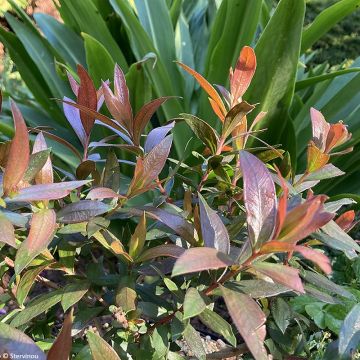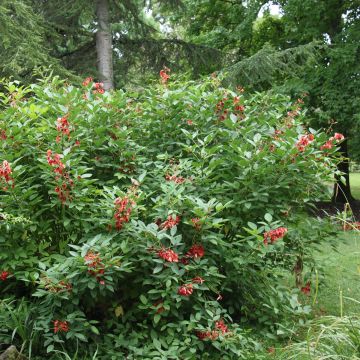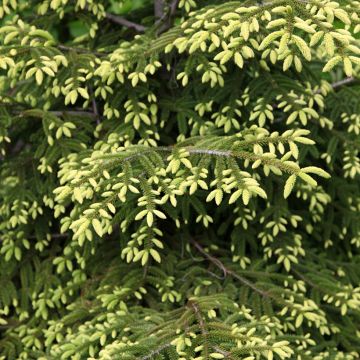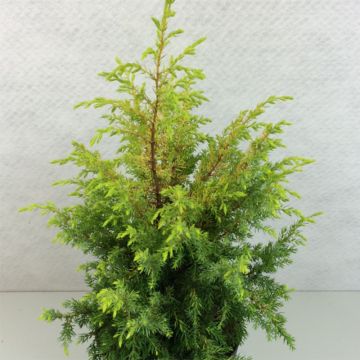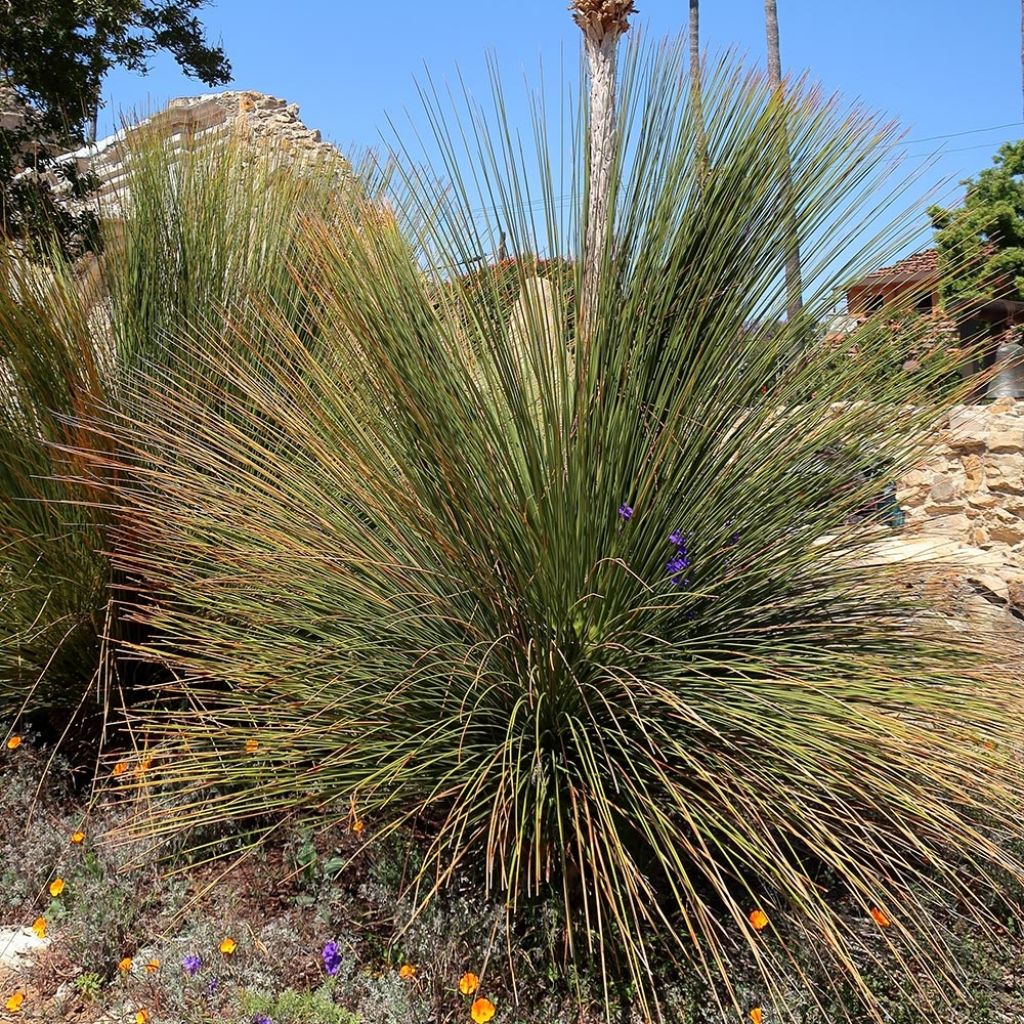

Dasylirion quadrangulatum - Dasylire ou Sotol quadrangulaire
Dasylirion quadrangulatum - Sotol
Dasylirion quadrangulatum
Mexican Grass Tree, Quadrangular Sotol
This plant carries a 24 months recovery warranty
More information
We guarantee the quality of our plants for a full growing cycle, and will replace at our expense any plant that fails to recover under normal climatic and planting conditions.
From €5.90 for pickup delivery and €6.90 for home delivery
Express home delivery from €8.90.
Does this plant fit my garden?
Set up your Plantfit profile →
Description
The Dasylirion quadrangularum, sometimes called the Quadrangular Sotol, is a tree-like succulent plant related to yuccas and agaves. It is much less common in cultivation than its close relative, the D. longissimum, to which it bears a strong resemblance. Its remarkably architectural silhouette truly enhances a dry garden, or even a terrace or patio when planted in a pot This fascinating plant bears numerous long, thread-like, non-prickly leaves radiating from the centre of the rosette, eventually forming a large sphere resembling a perfectly organised bouquet of fibre optics. Mature specimens develop a short and massive trunk and spectacularly flower with an immense floral spike that can exceed 3m (9 ft 10 in) in height. It is an easily cultivated plant in arid, poor, even limestone and rocky soil. Its hardiness mainly depends on soil drainage.
Dasylirion quadrangularum is a plant that can grow in low-lying areas of eastern Mexico and the southern United States. It can survive temperatures as low as -8°/-10C if planted in well-drained soil and exposed to winter rains. It can also tolerate long periods of drought during the summer. This plant belongs to the agave family and grows slowly in dry soil but faster in moist soil. It forms a dense ball when young, but as it matures, it becomes more graceful. It can grow up to 1m (3 ft 4 in) in height and 50cm (19.7 in) in diameter, with a trunk covered in old brown leaves. The crown of the plant is spherical, 80cm (31.5 in) to 1m (3 ft 4 in) wide, and made up of several hundred thin, flexible leaves that are medium green. Flowering occurs after 10 to 15 years of growth in summer. Small yellowish flowers densely pack a slender, upright spike that emerges from the centre of the plant. The spike often remains on the plant, even until winter. Male and female plants are distinct. Careful consideration should be given to the plant's placement, as its fragile root system, unlike agaves, does not tolerate disturbance and transplantation very well. This plant does not die after flowering, as a secondary bud on the central axis takes over. When watered during the summer, this dasylirion grows spectacularly.
The Dasylirion quadrangularum requires plenty of sunlight and well-draining, even poor and dry soil. It particularly dislikes heavy, waterlogged soils in winter. It is ideal on a large, arid slope, at the top of a large exotic or contemporary rock garden, or even near a swimming pool if the soil is well prepared to receive it. This plant will simply be magnificent when planted alone, accompanied by Cerastostigma plumbaginoides, Delosperma, or a dry meadow lawn called Zoyzia tenuifolia, the Mascarene grass. It can also be paired with agaves, Hesperaloe parviflora, prickly pears that are quite hardy (Cleistocactus strausii, Cylindropuntia imbricata), and equally spectacular and frugal shrubby aloes. It is well-suited for container cultivation, which provides protection from cold and humidity in winter.
Report an error about the product description
Dasylirion quadrangulatum - Sotol in pictures
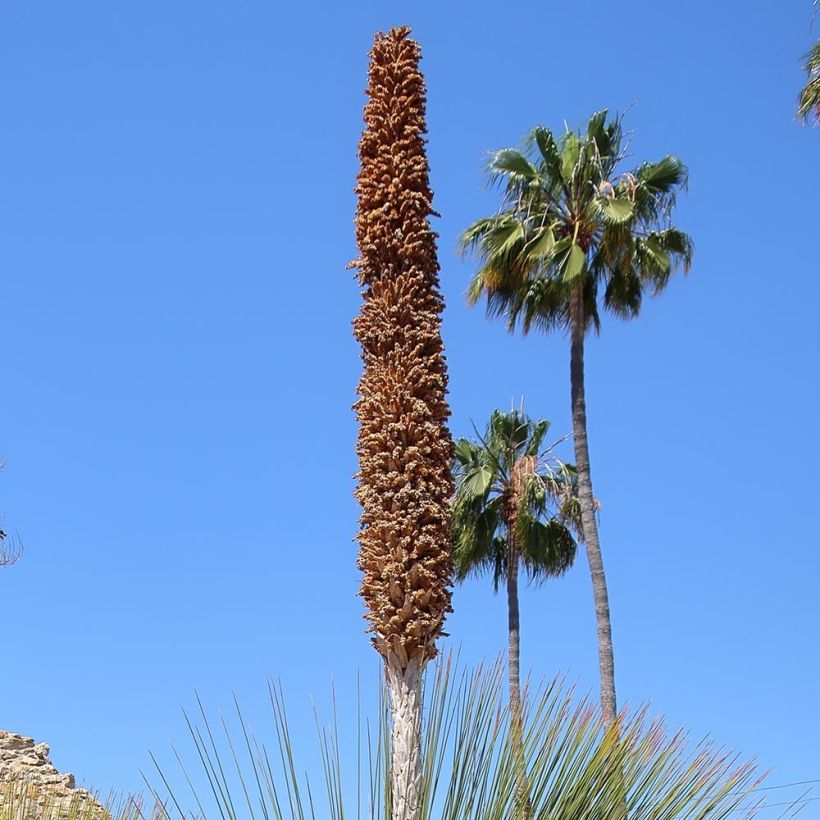

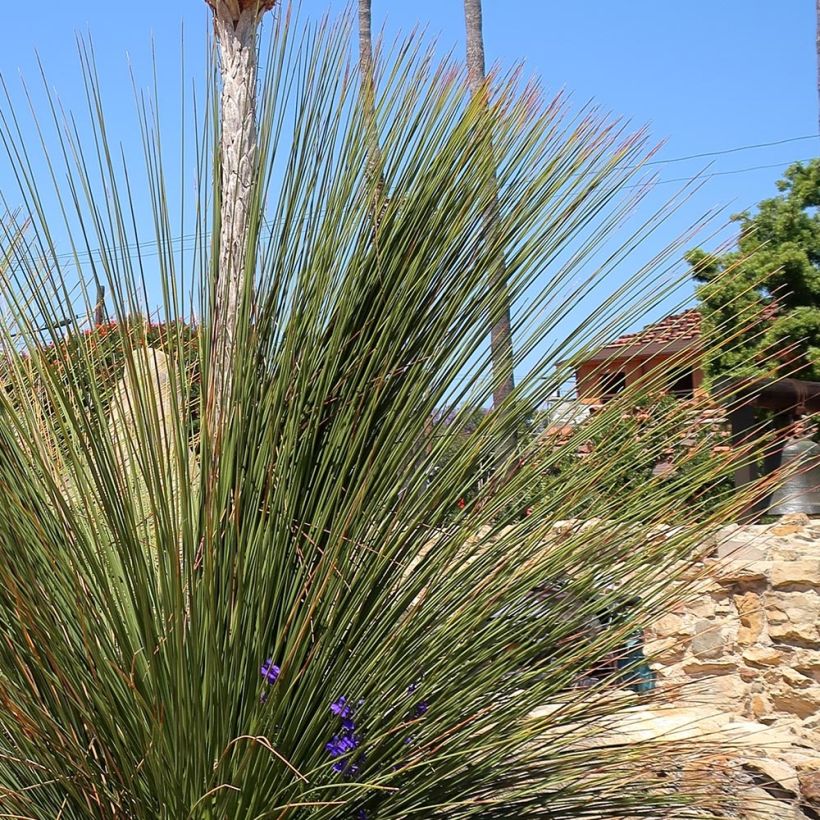

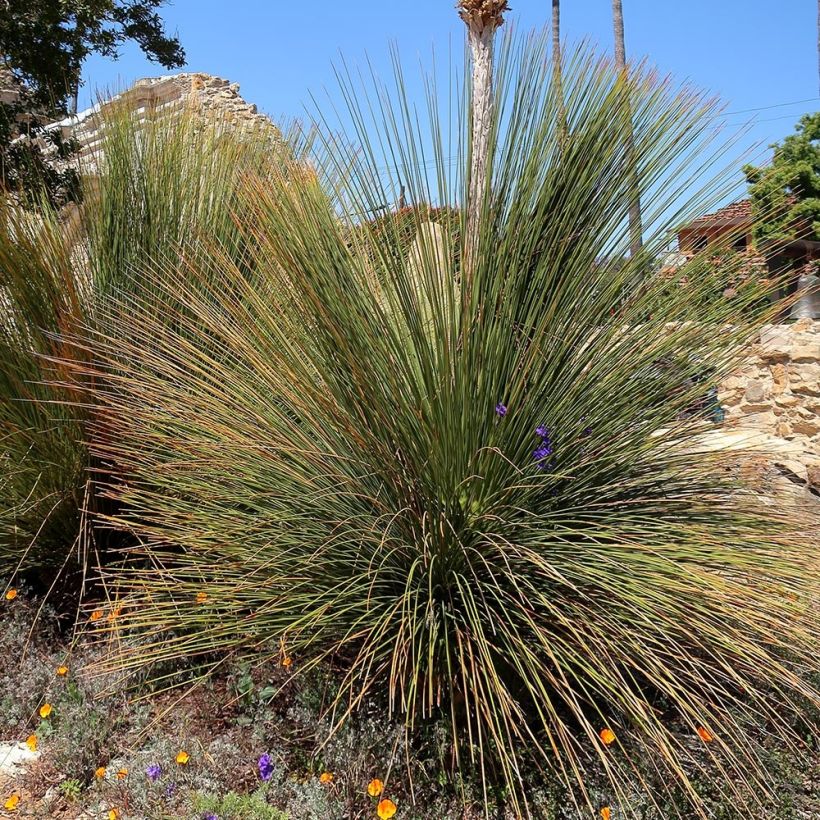

Plant habit
Flowering
Foliage
Botanical data
Dasylirion
quadrangulatum
Agavaceae (Asparagaceae)
Mexican Grass Tree, Quadrangular Sotol
North America
Other Dasylirion
Planting and care
When planting Dasylirion quadrangularum, choose a sunny and sheltered spot during the spring season. If you live in a borderline hardiness zone, protect the plant from rain. It can tolerate brief frosts of around -8/-10°C when fully grown, but snow can harm it. Water the plant generously but sparingly during summer and use fertile soil. Autumn planting is recommended in mild climates, especially for hot and dry areas during summer. When transplanting, remove the root ball carefully. Dasylirion quadrangularum does not tolerate heavy and clayey soils or humidity combined with cold. It grows best in a well-drained soil, such as on a rockery, raised bed or rocky slope, and prefers a slightly acidic, sandy, stony or limestone soil. The plant can tolerate poor soil, but it will grow slower. Monitor watering during the first two years, especially during hot and dry periods. Faded stems should be removed as needed.
If your dasylirion is not flowering, it is probably too young or has only been planted in your garden for 3 or 4 years. This plant takes time to establish itself and only flowers after 10 to 15 years, mainly in warmer areas. Depending on the sunlight and climate, it will flower every year or two or three years. If the plant benefits from automated drip irrigation in summer, its growth will be boosted and 5-year-old rosettes will be able to flower.
Planting period
Intended location
Care
This item has not been reviewed yet - be the first to leave a review about it.
Evergreen shrubs
Haven't found what you were looking for?
Hardiness is the lowest winter temperature a plant can endure without suffering serious damage or even dying. However, hardiness is affected by location (a sheltered area, such as a patio), protection (winter cover) and soil type (hardiness is improved by well-drained soil).

Photo Sharing Terms & Conditions
In order to encourage gardeners to interact and share their experiences, Promesse de fleurs offers various media enabling content to be uploaded onto its Site - in particular via the ‘Photo sharing’ module.
The User agrees to refrain from:
- Posting any content that is illegal, prejudicial, insulting, racist, inciteful to hatred, revisionist, contrary to public decency, that infringes on privacy or on the privacy rights of third parties, in particular the publicity rights of persons and goods, intellectual property rights, or the right to privacy.
- Submitting content on behalf of a third party;
- Impersonate the identity of a third party and/or publish any personal information about a third party;
In general, the User undertakes to refrain from any unethical behaviour.
All Content (in particular text, comments, files, images, photos, videos, creative works, etc.), which may be subject to property or intellectual property rights, image or other private rights, shall remain the property of the User, subject to the limited rights granted by the terms of the licence granted by Promesse de fleurs as stated below. Users are at liberty to publish or not to publish such Content on the Site, notably via the ‘Photo Sharing’ facility, and accept that this Content shall be made public and freely accessible, notably on the Internet.
Users further acknowledge, undertake to have ,and guarantee that they hold all necessary rights and permissions to publish such material on the Site, in particular with regard to the legislation in force pertaining to any privacy, property, intellectual property, image, or contractual rights, or rights of any other nature. By publishing such Content on the Site, Users acknowledge accepting full liability as publishers of the Content within the meaning of the law, and grant Promesse de fleurs, free of charge, an inclusive, worldwide licence for the said Content for the entire duration of its publication, including all reproduction, representation, up/downloading, displaying, performing, transmission, and storage rights.
Users also grant permission for their name to be linked to the Content and accept that this link may not always be made available.
By engaging in posting material, Users consent to their Content becoming automatically accessible on the Internet, in particular on other sites and/or blogs and/or web pages of the Promesse de fleurs site, including in particular social pages and the Promesse de fleurs catalogue.
Users may secure the removal of entrusted content free of charge by issuing a simple request via our contact form.
The flowering period indicated on our website applies to countries and regions located in USDA zone 8 (France, the United Kingdom, Ireland, the Netherlands, etc.)
It will vary according to where you live:
- In zones 9 to 10 (Italy, Spain, Greece, etc.), flowering will occur about 2 to 4 weeks earlier.
- In zones 6 to 7 (Germany, Poland, Slovenia, and lower mountainous regions), flowering will be delayed by 2 to 3 weeks.
- In zone 5 (Central Europe, Scandinavia), blooming will be delayed by 3 to 5 weeks.
In temperate climates, pruning of spring-flowering shrubs (forsythia, spireas, etc.) should be done just after flowering.
Pruning of summer-flowering shrubs (Indian Lilac, Perovskia, etc.) can be done in winter or spring.
In cold regions as well as with frost-sensitive plants, avoid pruning too early when severe frosts may still occur.
The planting period indicated on our website applies to countries and regions located in USDA zone 8 (France, United Kingdom, Ireland, Netherlands).
It will vary according to where you live:
- In Mediterranean zones (Marseille, Madrid, Milan, etc.), autumn and winter are the best planting periods.
- In continental zones (Strasbourg, Munich, Vienna, etc.), delay planting by 2 to 3 weeks in spring and bring it forward by 2 to 4 weeks in autumn.
- In mountainous regions (the Alps, Pyrenees, Carpathians, etc.), it is best to plant in late spring (May-June) or late summer (August-September).
The harvesting period indicated on our website applies to countries and regions in USDA zone 8 (France, England, Ireland, the Netherlands).
In colder areas (Scandinavia, Poland, Austria...) fruit and vegetable harvests are likely to be delayed by 3-4 weeks.
In warmer areas (Italy, Spain, Greece, etc.), harvesting will probably take place earlier, depending on weather conditions.
The sowing periods indicated on our website apply to countries and regions within USDA Zone 8 (France, UK, Ireland, Netherlands).
In colder areas (Scandinavia, Poland, Austria...), delay any outdoor sowing by 3-4 weeks, or sow under glass.
In warmer climes (Italy, Spain, Greece, etc.), bring outdoor sowing forward by a few weeks.

































